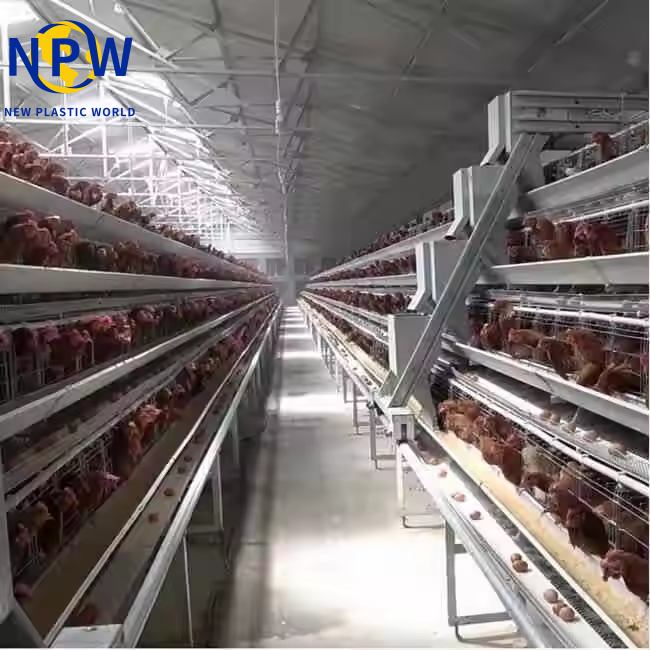Cage breeding of layers saves space, reduces feed consumption, facilitates uniform immunization, and has many other advantages. It is also a universal development trend in the breeding industry, and can be combined with advanced poultry equipment to improve breeding efficiency. However, various problems are often encountered in the process of layer breeding. Below, Qingdao NPW Plastic Co., Ltd. has sorted out some common questions and answers about layer breeding, hoping to provide help for farmers.
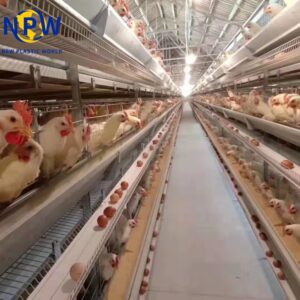
1. Calcium Supplementation for Layers
Farmer’s question: When do layers need calcium supplementation?
Calcium supplementation for layers is generally carried out two weeks before they start laying eggs. For young layers (22-40 weeks old) in the early stage of egg production, if the effective utilization rate of calcium is expected to be 60%, to meet the calcium requirement for eggshell formation:
- When the flock’s egg production rate is 70%, each chicken needs at least 2.6 grams of calcium per day.
- When the egg production rate reaches 80%, 90%, or 100%, the daily calcium requirement per chicken is 2.7 grams, 3.0 grams, and 3.3 grams respectively.
During the peak egg production period, when the egg production rate reaches 95%, most chickens in the flock actually lay eggs every day (100% individual egg production rate). Therefore, it is necessary to provide sufficient calcium at the 100% level, that is, 3.3 grams of calcium per chicken per day, which is the necessary calcium amount for layers in the early laying stage.
The absorption time of calcium is related to the effect of eggshell formation. The most important time for calcium absorption is in the afternoon because eggshells are formed in the afternoon. Calcium supplemented in the afternoon does not need to go through the bones and is directly deposited into the eggshell. Therefore, large-grained calcium carbonate should be provided for layers to eat freely in the afternoon. To meet the calcium requirement for eggshell formation, part of the calcium can be supplemented at night. 10-15 grams of shell powder or calcium carbonate pellets can be mixed into the feed for each chicken every day, or directly placed in the trough for the chickens to eat freely.
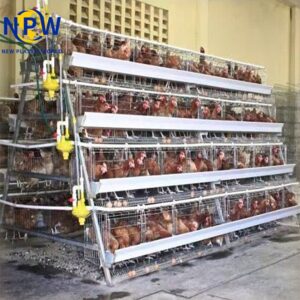
2. Feed Replacement for Layers
Farmer’s question: How to replace the feed for layers?
The replacement of layer feed must be carried out at the appropriate time and stage. It should not be done blindly or 急于求成,otherwise it will cause a serious drop in egg production, which is difficult to recover!
2.1 Selection of replacement time
It is best to switch to layer feed when the laying rate of the flock reaches 2%-5%. The calcium content of layer feed should be 3.4%-3.5% and crude protein 18%. When changing feed:
- For young chickens raised under natural light after summer, they usually start laying eggs later, and feed replacement can start at 18 weeks of age.
- For backup chickens raised under natural light after winter, they usually start laying eggs earlier, and feed replacement can be done at 17 weeks of age.
2.2 According to breed standards
Feed replacement should be carried out in accordance with breed breeding standards. Generally, chickens aged 19-20 weeks are fed pre-laying feed (also known as transition feed), which has a higher calcium and protein content than young chicken feed, with a general calcium ratio of 1% and crude protein of 16.5%. The feed replacement process should be completed gradually over about half a month.
2.3 Do not rush to replace feed for young chickens
Young chickens cannot be directly switched to layer feed, nor can the feed be changed suddenly. If you rush to complete the feed replacement at one time, the sudden increase in calcium and crude protein (especially protein) will cause the chickens to drink more water and suffer from diarrhea due to poor digestion and absorption. Therefore, the calcium content in young chicken feed is generally about 0.8%, and the crude protein content is about 15.5%.
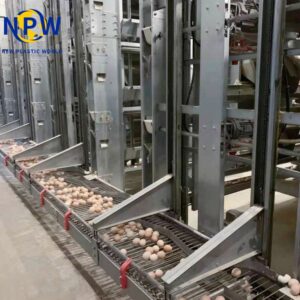
3. Paralysis in First-Laying Hens
Farmer’s question: Some of my newly laying hens can’t stand up. What causes this paralysis?
First-laying hens are prone to paralysis under adverse conditions such as insufficient nutrient supply, too long light time, and high temperature due to increased body consumption.
Some layers, especially first-laying hens, often suffer from paralysis. After the onset, they show symptoms such as weak legs, trembling, drooping wings, squatting, swollen leg joints, laying thin-shelled or soft-shelled eggs, and finally paralysis. Most cases of paralysis are caused by a lack of minerals or vitamin D3 in the feed (the main role of vitamin D3 is to promote the absorption of calcium and phosphorus in the intestines). Layers need a lot of nutrients when laying eggs, especially minerals such as calcium and phosphorus, which are the main components of bones and eggshells. With the increase in egg production rate, more and more minerals are consumed. If mineral or vitamin D3 supplementation is ignored at this stage, layers are prone to paralysis. During this period, it is necessary to timely and reasonably supplement calcium and vitamin D3 to layers. It is recommended to supplement cod liver oil and use intestinal drugs to treat diarrhea.
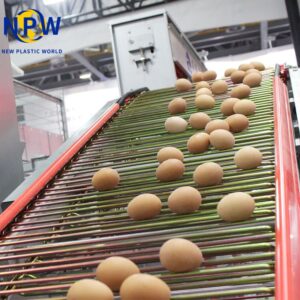
4. The Best Time for Deworming Layers
Farmer’s question: When is the best time to deworm layers?
Layers are generally dewormed when they are 60-120 days old. If deworming is still needed during the laying period, it is best to choose traditional Chinese medicine for deworming, as the use of chemical drugs may affect the egg production rate. It is recommended to deworm at least twice before layers start laying eggs!
In addition, roundworms are a chronic, consumptive parasite that harms chickens, and the damage they cause to chickens is no less than that of infectious diseases. Farmers may find that layers have pale faces, emaciation, loose and dull feathers, drooping wings, slow movement, staying still, reduced feed intake, and decreased egg production. When these symptoms appear, attention should be paid to checking whether there are roundworms in the chickens and timely deworming to improve breeding efficiency.
The best season to deworm layers for roundworms is late summer and early autumn. The preferred drug for deworming roundworms is levamisole hydrochloride. Add 20 grams of the drug per kilogram of feed or drinking water, let the chickens eat freely, and administer it at least 2-3 times a day to achieve a good deworming effect, which is safe to use. During the deworming period, chicken manure should be removed in time and piled up for fermentation to completely kill roundworm eggs. At the same time, the chicken coop, utensils, and venue must be thoroughly cleaned and disinfected.
Using a chicken manure dehydrator can efficiently process chicken manure and quickly produce organic fertilizer, and Qingdao NPW Plastic Co., Ltd. can also provide relevant equipment support.
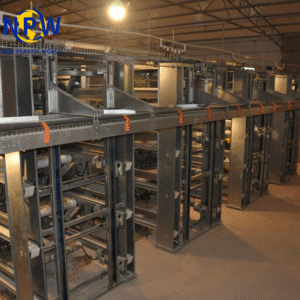
5. Causes and Solutions for Prolapse of the Anus in Layers at First Laying
Farmer’s question: Why do layers have prolapse of the anus when they first start laying eggs?
There are many reasons for prolapse of the anus in layers at first laying. Firstly, it is necessary to consider whether the lights are turned on too early. Chicks need auxiliary brooding in the first week. If the lights are turned on too early to promote the secretion of estrogen in hens, it is easy to cause prolapse of the anus. Excessively strong light intensity or irregular light time can also easily lead to prolapse of the anus. Chicken diarrhea can cause relaxation of the anus, leading to prolapse. Secondly, if the flock is uneven in development, with some being fat and some being thin, the pubic bones of thin layers cannot expand widely, making it difficult to lay eggs, and the fallopian tubes of fat chickens are compressed by abdominal fat, which can lead to prolapse of the anus. Finally, excessive breeding density, dirty environment, untimely removal of feces, heavy ammonia smell, and long-term stress in chickens can also cause the anus to evert and fail to retract.
For layers with prolapse of the anus, the following solutions can be adopted:
5.1 Do a good job in feeding and management during the rearing period to ensure that the tibia weight of the chickens meets the standard.
5.2 Supplement light and vitamin D to promote calcium absorption. The absorption of calcium requires the participation of fat-soluble vitamins such as vitamin D. If calcium is not fully utilized, it will not only cause prolapse of the anus but also affect egg quality. It is recommended to regularly add 500 grams of bile acid per ton of feed to store fat-soluble vitamins such as vitamin D, so that calcium can be fully utilized. At the same time, bile acid can eliminate diarrhea caused by mycotoxins, and when used in combination with eucalyptus essential oil, it is a golden combination for breeding.
5.3 Detect and treat early. Once a chicken with prolapse of the anus is found, it should be isolated immediately. For chickens with mild symptoms, the prolapsed part can be washed with 1% potassium permanganate solution and then coated with gentian violet. If the prolapsed part protrudes again after resetting, or if it no longer protrudes but the chicken shows pain, has sparse and difficult defecation, the feed should be restricted or stopped. Rinse with warm salt water twice a day, and remove feces and contaminants around the anus. After flushing, drop 1-2 ml of chloramphenicol eye drops into the anus and turn the chicken over for 5-10 minutes to encourage the drug to enter the affected area.
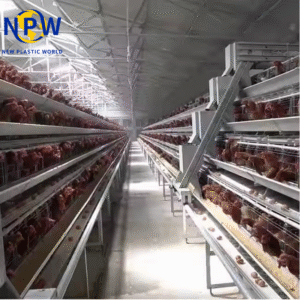
6. Disease Management in Late Laying Period of Layers
Farmer’s question: I raise 18,000 layers, which are 280 days old now. They are suspected to have a viral disease. I have used antiviral drugs, respiratory drugs, and E. coli drugs. What should I do?
It is suspected that the chickens have viral and respiratory diseases, mainly Newcastle disease. It is recommended to use some antiviral drugs, drugs for Mycoplasma and Escherichia coli, and do a good job in disinfection of the chicken house environment.
If the Newcastle disease antibody is low, a Newcastle disease vaccine can be administered.
Most diseases such as Newcastle disease, avian influenza, etc., will cause a decline in egg quality. For epidemic prevention and control, strengthening biosecurity management is the most direct and effective measure.
6.1 Do a good job in the intestinal and liver health of layers. Intestinal and liver diseases in layers are another important problem that often causes a decline in egg quality.
6.2 Strengthen the control of the feeding environment. Inadequate lighting, improper temperature, and stress can cause a decline in egg quality.
6.3 The length and intensity of light have a significant impact on eggshell quality. A sudden increase in light intensity will reduce eggshell quality and increase the number of broken eggs, so dim light is needed. Keeping the house quiet is beneficial to eggshell formation. Currently, the light duration for layers is 16 hours.
6.4 Control the egg weight and chicken weight in the late laying period. With the increase in the age of layers, the egg weight gradually increases, but the increase in eggshell weight is much smaller than that in egg weight, resulting in relatively insufficient absorption and deposition of calcium and phosphorus. The size of the egg is directly affected by the size of the yolk, and the size of the yolk is mainly affected by the weight of the chicken. Therefore, in the breeding process, it is necessary to first control the egg weight, and after entering the peak laying period, control the chicken weight to prevent it from increasing too quickly.
The above are some common problems and solutions in the process of layer breeding, hoping to provide help for farmers. In addition, Qingdao NPW Plastic Co., Ltd. also provides one-stop purchasing solutions to help you carry out poultry breeding business.

